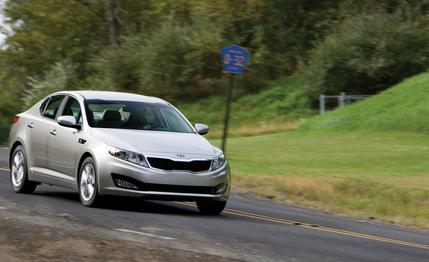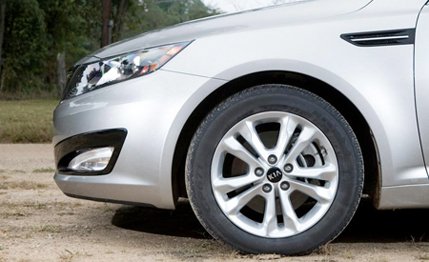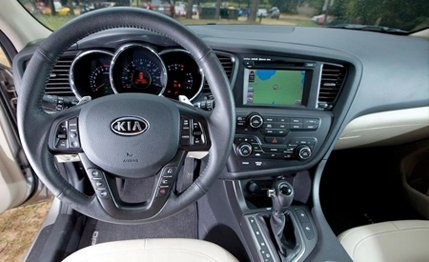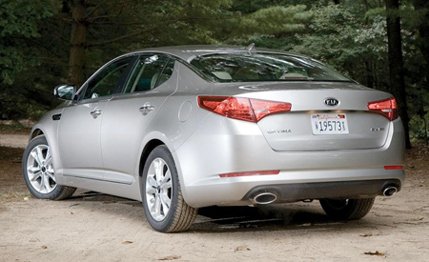
 Instrumented Test
Instrumented Test
You can be forgiven for thinking of the Optima along dismissive lines, like a “Sonata with a different melody,” because there’s more than a little truth in that summary. The Kia’s structural foundations and mechanical elements are closely related to those employed in the Sonata.
This isn’t at all astonishing, given Kia’s subsidiary relationship to Hyundai. However, if shared components suggest a lack of creativity, look at it this way: While diversity may be a good thing in societal terms, in the world of mechanical systems, it just represents added cost.
In any case, this is no Mercury—a thinly veneered version of a Ford. All exterior elements are unique to this car, so there is no shared Sonata sheetmetal. If it’s not quite as sexy as the Sonata, it’s quietly handsome and far more stylish than its predecessor, a car that was basically anonymous. We gave it a “high yawn factor” in a comparison test four years ago [“Familial Four-Doors,” February 2007].


There was a high yawn factor to that Optima’s performance, too. With just 161 horsepower and 163 pound-feet of torque from its 2.4-liter four, which ran through a five-speed automatic, the Optima sauntered to 60 mph in 8.9 seconds and covered a quarter-mile in 16.9 at 83 mph.
Equipped with Hyundai’s new 2.4-liter, direct-injection four (200 horsepower, 186 pound-feet) and six-speed automatic, the redesigned Optima hits those same marks in 7.8 seconds and 16.2 at 89 mph—roughly equal to the similarly equipped Sonata that trumped a Honda Accord and a Subaru Legacy last spring [“Practically Chic,” May 2010].
It does so, moreover, with fuel economy that matches its predecessor’s city rating and betters its highway figure by 3 mpg (22 city, 35 highway). As usual, we underachieved—21 mpg for the test—but most of our driving was hard-core 10Best-evaluation miles, and your mileage may vary, probably upward.


Those are all respectable numbers, but even more respectable are this Optima’s responses to inputs from the helm. The Sonata’s agility almost matched the Accord’s in last May’s confrontation, but the Optima edges closer to parity. It does so with accurate steering and suspension tuning that’s a little stiffer than the Sonata’s.
This yields ride quality that may be a little firm for some tastes. Moreover, grip is lower than expected, at 0.80 g, and braking—186 feet from 70 mph—could also be better. But for all that, the Optima scores higher on the fun-to-drive index than its sibling.
Dynamics notwithstanding, perhaps the most compelling element of the new Optima is its interior, a study in elegant design, excellent materials, and all-day comfort. Like the Sonata, there’s plenty of rear-seat legroom, and, consistent with the Hyundai-Kia success formula, there’s a lot of standard equipment baked into the price.


Aside from ride quality that some may find a smidge stiff and a transmission manumatic function that’s no better than average, there’s very little to criticize here. For those who want more urgency, there’s the 274-hp turbo version, which lacks only a manual-transmission option to win our hearty endorsement.
Some may wonder why a Hyundai subsidiary would create competition for the Sonata. But the character of each car differs enough that there’s room for both in this crowded field—undoubtedly at the expense of other players.